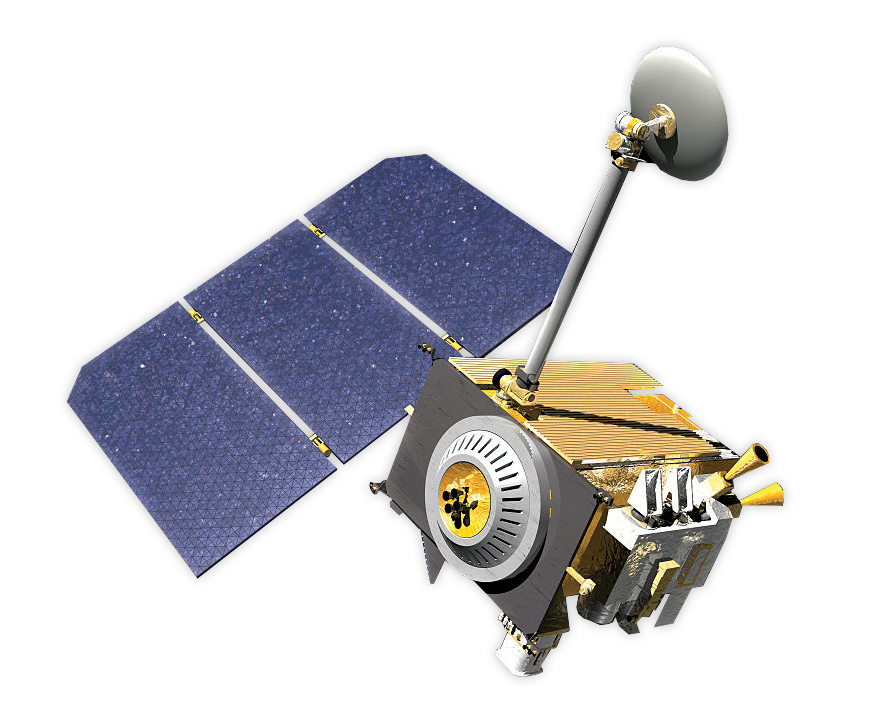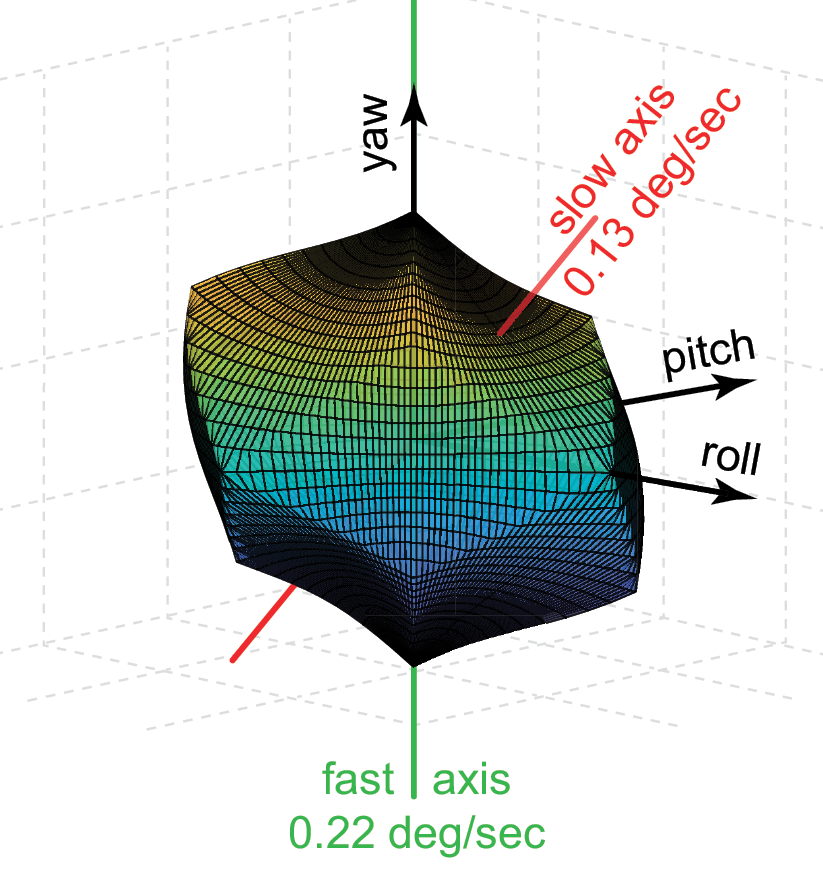Download PDF: Fast Attitude Maneuvers for the Lunar Reconnaissance Orbiter
A new operational capability for fast attitude maneuvering is being developed and tested in preparation for operational implementation on board the Lunar Reconnaissance Orbiter (LRO). Based on recent advances in attitude maneuvering, this capability leverages the expertise of personnel from the NESC, the LRO Project Office, and the Naval Postgraduate School.
The LRO hosts seven scientific instruments. For some instruments, it is necessary to slew off nadir to acquire science targets. Previously, the accessibility of off nadir science targets was limited by slew rates and/or violations of occultation, thermal and power constraints along the standard slew path. The new Fast Maneuver (FastMan) employs a slew path that specifically avoids constraint violations while minimizing the slew time. FastMan thus opens regions of observation that were not previously feasible and improves the overall mission science return.
To perform a fast slew between two orientations, FastMan exploits the spacecraft’s instantaneous preferred axes of rotation. The fast maneuver defines a path to the target attitude that maximizes the instantaneous momentum-to-inertia ratio. As part of this process, the spacecraft is autonomously steered around constraints avoiding the need for multi-leg maneuvers. FastMan has been adapted for LRO so that it can be implemented without modifying the spacecraft attitude control logic to simplify the operational implementation. The approach may benefit future missions as well as missions in extended phases.
The Lunar Orbiter Laser Altimeter (LOLA) is one of LRO’s seven scientific instruments. The LOLA High-Gain Antenna (HGA) science is the first beneficiary of the FastMan capability. LOLA HGA science uses a laser ranging (LR) system to detect dust near the lunar surface. The LR system is slewed to the sunrise or sunset horizon, looking for evidence of scattered light that may be detected as a rise in signal when the sun is just below the horizon. Because LOLA HGA science typically requires large slews, the ability to collect science is limited, and at times even prevented, by the time required to do the slews. Using FastMan, slew times for a typical LOLA HGA science opportunity can be reduced by approximately 45%. This compresses the total time required to perform a LOLA HGA science collect by about 15 minutes per slew. This reduction in slew time allows the LOLA HGA instrument to collect additional data within an allotted 60-minute window. Effort is presently underway to determine how FastMan can be used to support Mini-RF, another instrument on board LRO that must perform large slews to fulfill science objectives.
For more information, contact:
Cornelius J. Dennehy, GSFC, cornelius.j.dennehy@nasa.gov




























